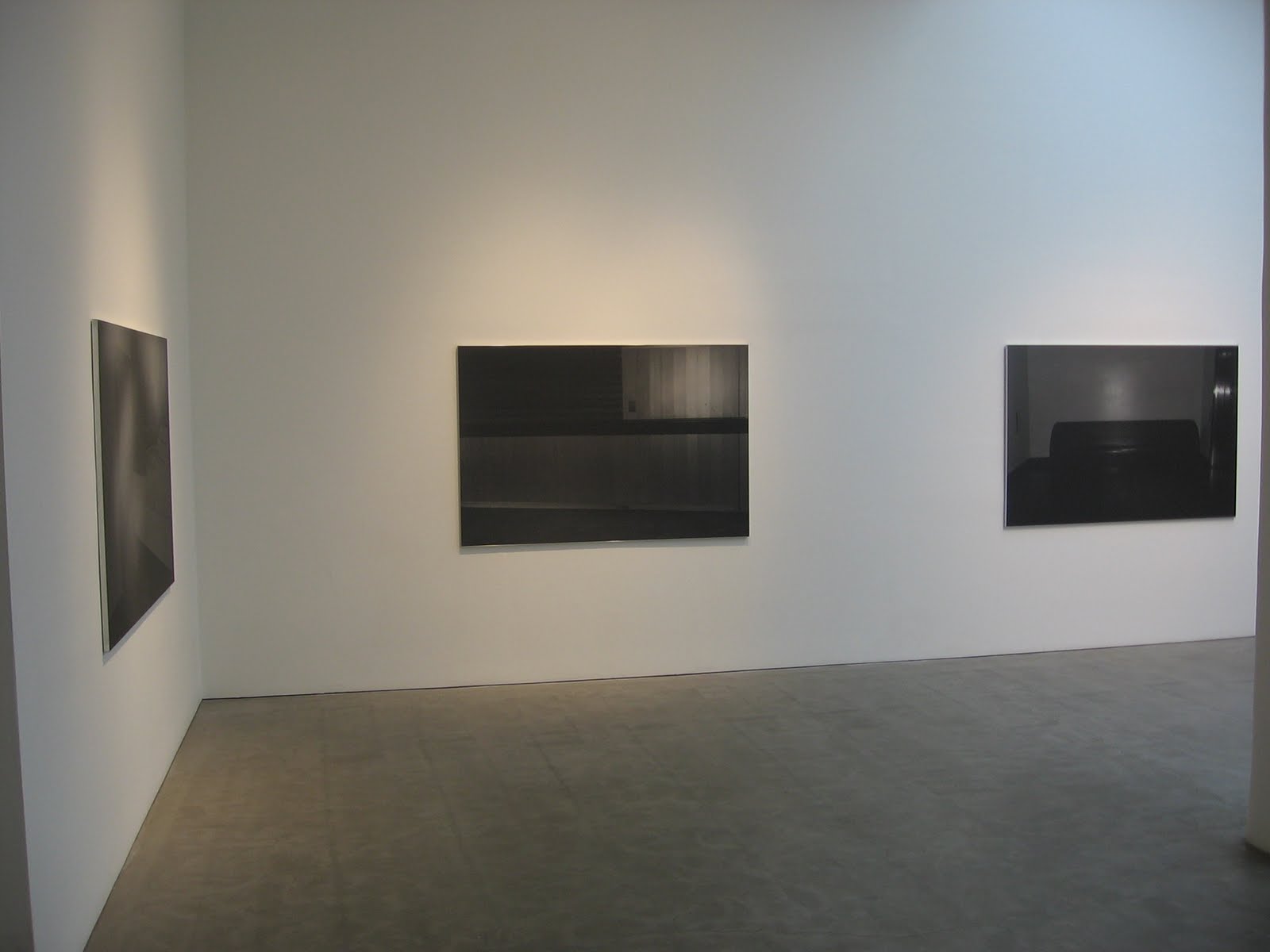 JTF (just the facts): A total of 23 large scale works, 12 by Braeckman and 11 by Henson, hung in the front room, hallways, two side galleries, and the main gallery space in the back. The works by Braeckman are gelatin silver prints mounted to aluminum, with no frames. All of the prints are 71×47 or reverse, except one smaller print, which is 47×31. The images are variously printed in editions of 3 or 5, and were made between 1994 and 2007. The works by Henson are Type C color prints, framed in dark wood but not matted. Most of the prints are 50×70 or reverse, with a couple of prints sized at 50×50 square. All of these works were made between 1990 and 2006 and come in editions of 5. (Installation shots at right.)
JTF (just the facts): A total of 23 large scale works, 12 by Braeckman and 11 by Henson, hung in the front room, hallways, two side galleries, and the main gallery space in the back. The works by Braeckman are gelatin silver prints mounted to aluminum, with no frames. All of the prints are 71×47 or reverse, except one smaller print, which is 47×31. The images are variously printed in editions of 3 or 5, and were made between 1994 and 2007. The works by Henson are Type C color prints, framed in dark wood but not matted. Most of the prints are 50×70 or reverse, with a couple of prints sized at 50×50 square. All of these works were made between 1990 and 2006 and come in editions of 5. (Installation shots at right.)
 Musical theorists use the word timbre to distinguish the difference in sound between say a piano and a trumpet, even when they are playing the same exact notes; instruments and voices have a specific, recognizable sound that can be easily and obviously distinguished by listeners (and used for effect by composers). Even though both Braeckman and Henson are using shadows in their work, the aesthetic timbre of those shadows is remarkably dissimilar; their tonality and feeling is entirely opposite.
Musical theorists use the word timbre to distinguish the difference in sound between say a piano and a trumpet, even when they are playing the same exact notes; instruments and voices have a specific, recognizable sound that can be easily and obviously distinguished by listeners (and used for effect by composers). Even though both Braeckman and Henson are using shadows in their work, the aesthetic timbre of those shadows is remarkably dissimilar; their tonality and feeling is entirely opposite.  Henson’s images of teenagers and in-between spaces are altogether more moody and emotional. His rich shadows are thick and enveloping, his figures emerging from the opaque darkness and then receding back into the background, surrounded by the city lights in the distance. Some have likened his use of light to the chiraoscuro of Caravaggio, and this comparison seems apt; the vulnerability of his listless semi-clad subjects is enhanced by the shadows that alternately isolate and drown them. His painterly faces move back and forth between awkward and confrontational.
Henson’s images of teenagers and in-between spaces are altogether more moody and emotional. His rich shadows are thick and enveloping, his figures emerging from the opaque darkness and then receding back into the background, surrounded by the city lights in the distance. Some have likened his use of light to the chiraoscuro of Caravaggio, and this comparison seems apt; the vulnerability of his listless semi-clad subjects is enhanced by the shadows that alternately isolate and drown them. His painterly faces move back and forth between awkward and confrontational.  Collector’s POV: The works by Braeckman in this show are priced at either $10500 or $17000, with 2 images POR. The works by Henson are priced at either $30000, $34500, or $37500. While Braeckman has little or no secondary market pricing history, Henson’s images have intermittently come up for sale in the past few years, pricing between $7000 and $26000. Dirk Braeckman is also represented by Zeno X Gallery in Antwerp (here); Bill Henson is also represented by Roslyn Oxley9 Gallery in Sydney (here).
Collector’s POV: The works by Braeckman in this show are priced at either $10500 or $17000, with 2 images POR. The works by Henson are priced at either $30000, $34500, or $37500. While Braeckman has little or no secondary market pricing history, Henson’s images have intermittently come up for sale in the past few years, pricing between $7000 and $26000. Dirk Braeckman is also represented by Zeno X Gallery in Antwerp (here); Bill Henson is also represented by Roslyn Oxley9 Gallery in Sydney (here).Through May 8th





Correction: The first version of this review inadvertently but consistently misspelled Dirk Braeckman's last name. This has now been corrected, but I want to offer my sincere apologies to the artist for this embarassing failure in copy editing.